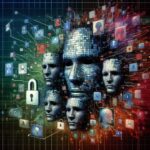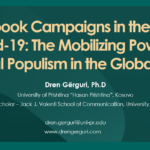The large number of likes, comments or distributions does not mean that it reflects the real number of people involved in that interactivity. The online public sphere is often contaminated by Bots and Trolls.
Interactivity on social media can only be the product of communication between people. On Facebook, Instagram or Twitter we can see a post that was written by a person hiding behind a fake profile, or that was not written at all by a person. We may also see likes, comments, or distributions that have been made from fake profiles, or from programs that create and manage fake profiles. Considering the great use of Facebook in Kosovo’s society, but also of social media in general, it is very important to be aware that in the online public sphere you can see posts or actions made by a program run by the person or from false profiles, behind which stand individuals with a different identity. Bots and Trolls are two ways that can create the illusion of the popularity of a politician, singer or the illusion of the great spread of a certain information or topic. This may lead people to think that, as long as that information is so widespread, it may be true, but in fact, everything is an illusion created by bots or trolls.
The Bots problem
Numerous social media profiles can be ‘Bots’, short for robots. These profiles are programmed by humans and one person can manage hundreds or thousands of bots. On Facebook we happen to see the involvement in a post of a politician or a public figure even of dubious profiles. It happens to artificially create interactivity in certain posts or topics, consequently for them to be seen by a larger number of people. During the period January – September last year, Facebook blocked over 4.5 billion bots profiles, while in 2019, it blocked over 5 billion bots profiles.
The Trolls problem
Unlike Bots, behind the Trolls stand real people and not a program. Trolls are fake profiles that are directly managed by humans, so there is no automatic feedback or certain programming. Trolls are those profiles that are involved in online communication but do not represent a person’s identity, it could be a fake name or a photo taken from the internet. This makes Trolls even more dangerous because they can look more reliable and at the same time, it can be even harder to spot them as being fake profiles. As with Bots, Trolls are mostly used to influence any online discussion, post or message. Such was the case with the comments in a post of Gazeta Blic when the Trolls were used to give direction to the position of the public on the issue raised by the media in its post, regarding the reaction of the police by PSD activists. While many people thought that the police had reacted harshly, others through Trolls tried to dominate the discussion by answering ‘no’ to the portal’s question.
Tackling Bots and Trolls
The online public sphere can be contaminated by fake profiles. Despite attempts by giants like Facebook and Twitter to shut down bots and trolls, still a large number of fake profiles circulate on these social media. This raises the need for everyone to be careful not to be manipulated by Bots or Trolls, as well as to help eliminate them by reporting them as fake profiles, according to the form regulated by Facebook, Twitter or other media. social. So the large number of likes, comments or distributions does not mean that it reflects the real number of people involved in that interactivity. The online public sphere is often contaminated by Bots and Trolls, fake profiles that are used for certain purposes to manipulate people’s beliefs.










